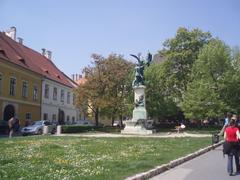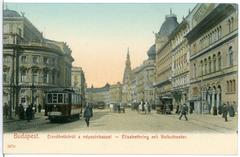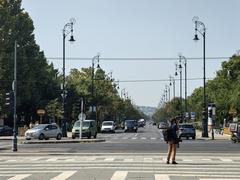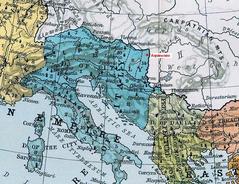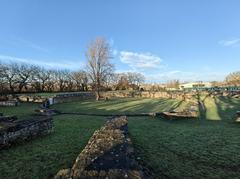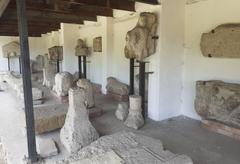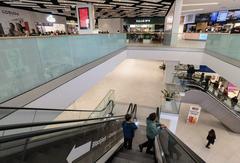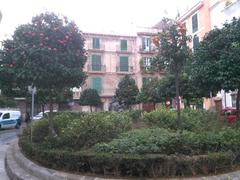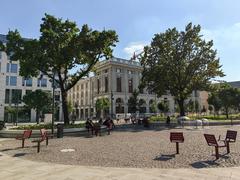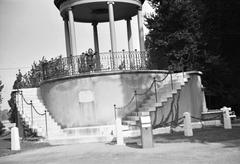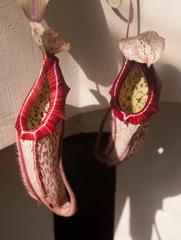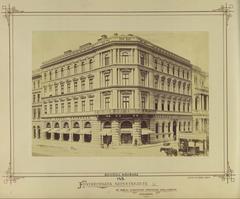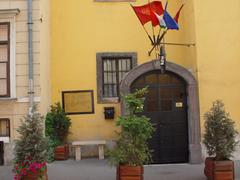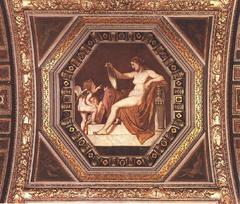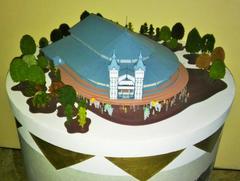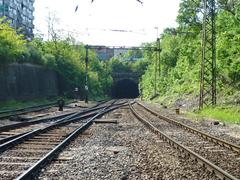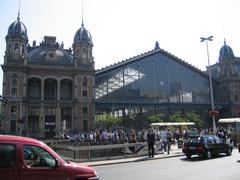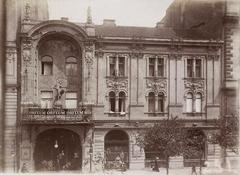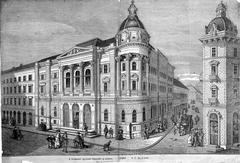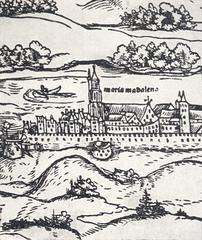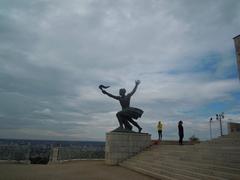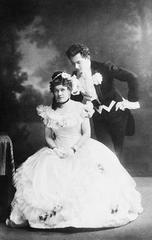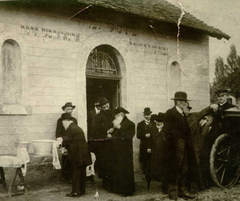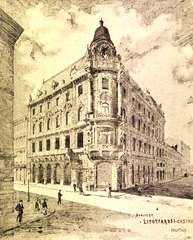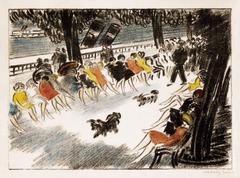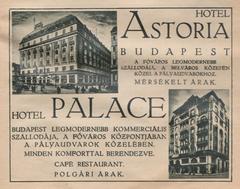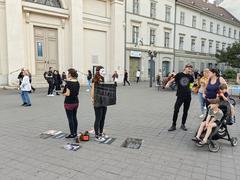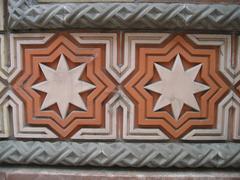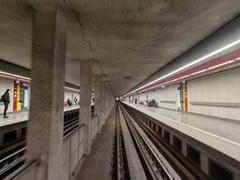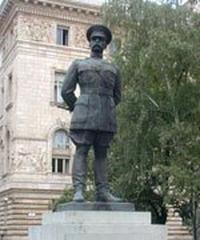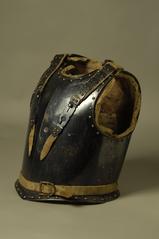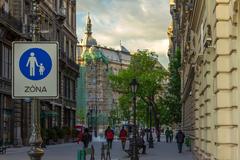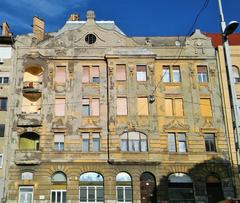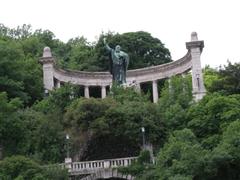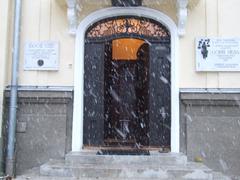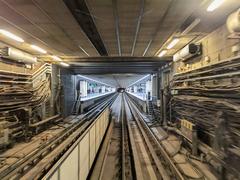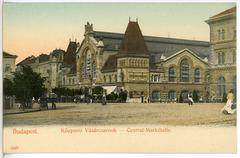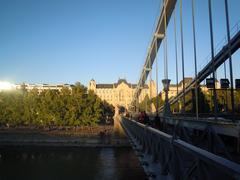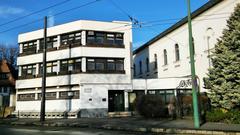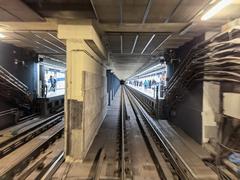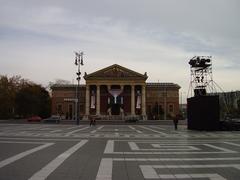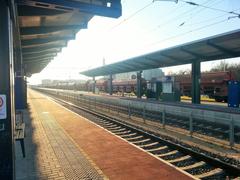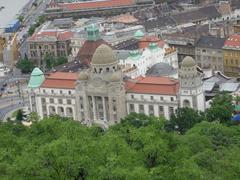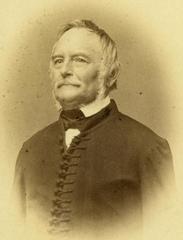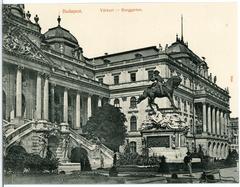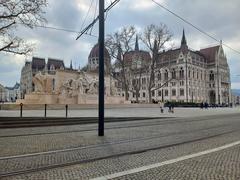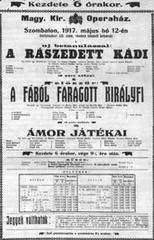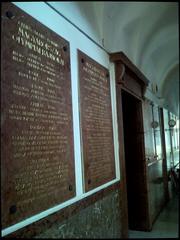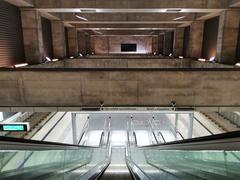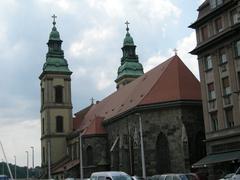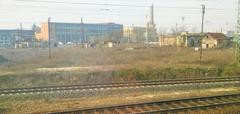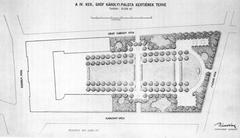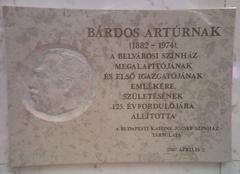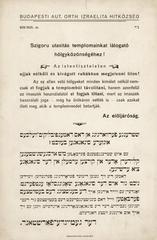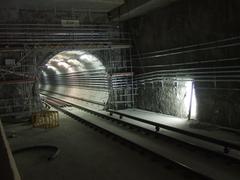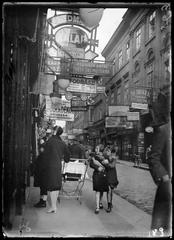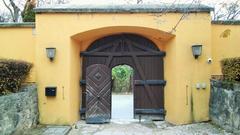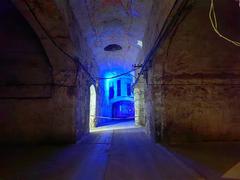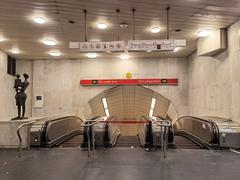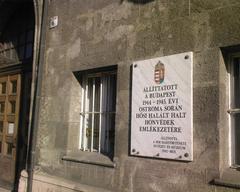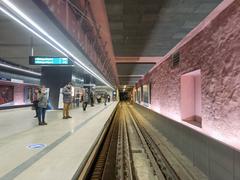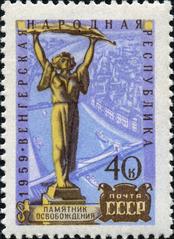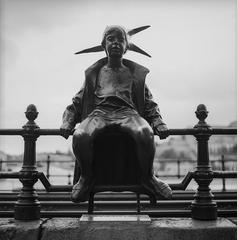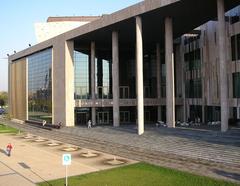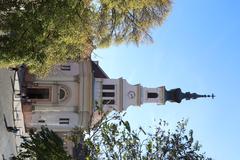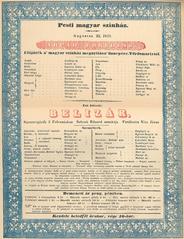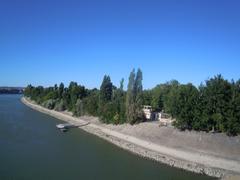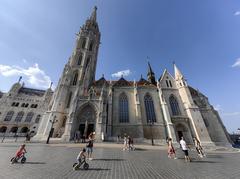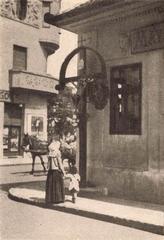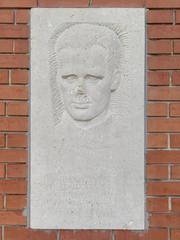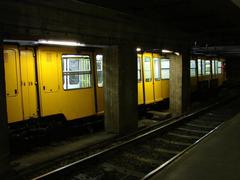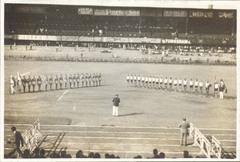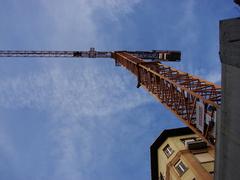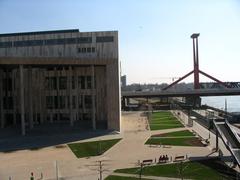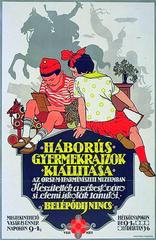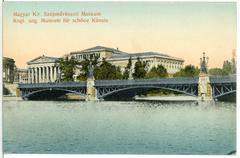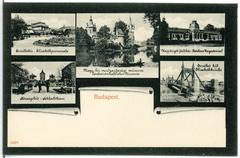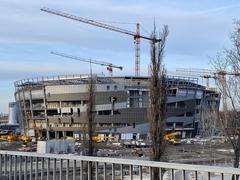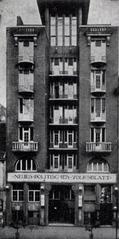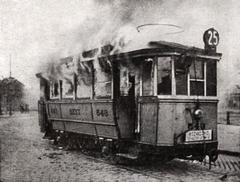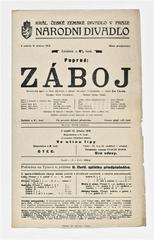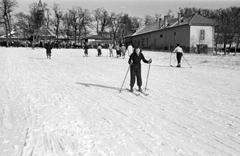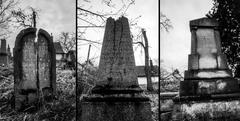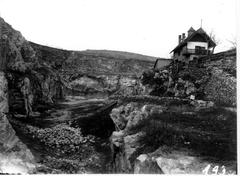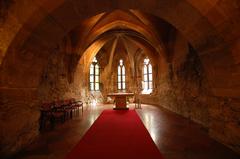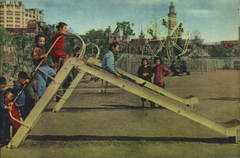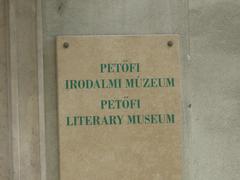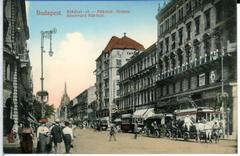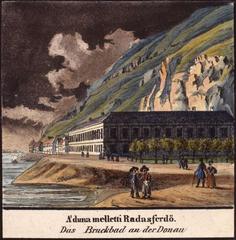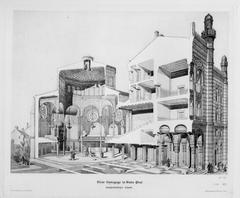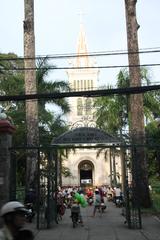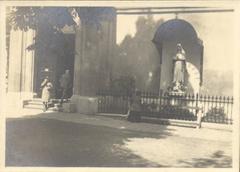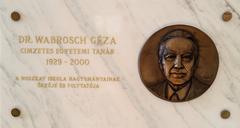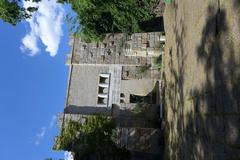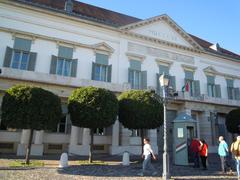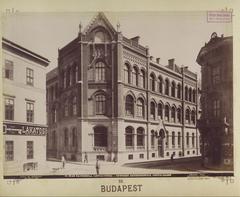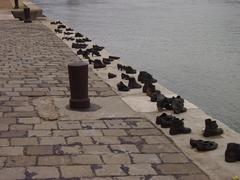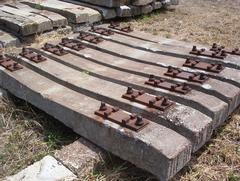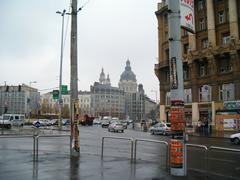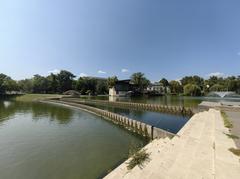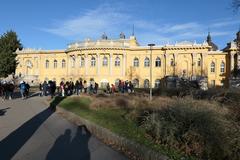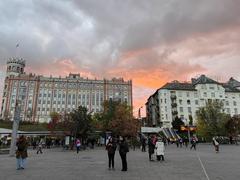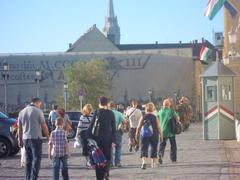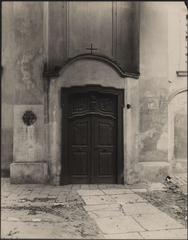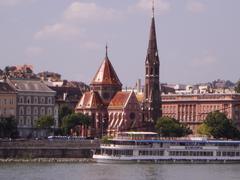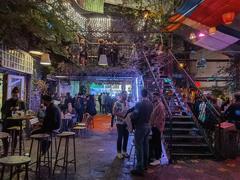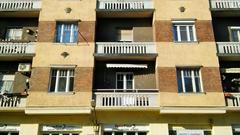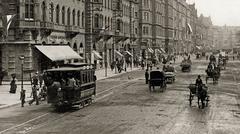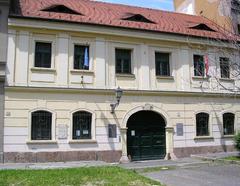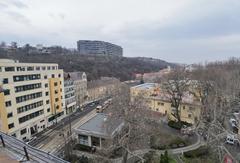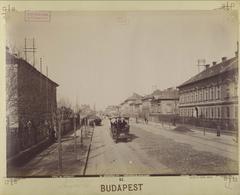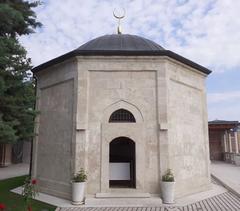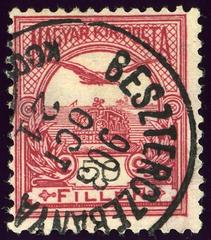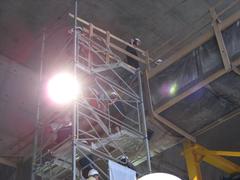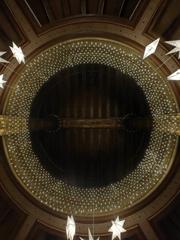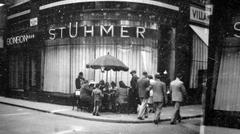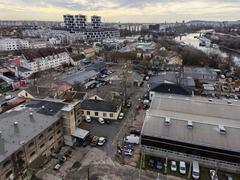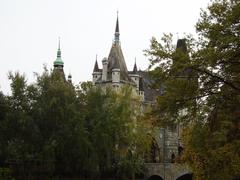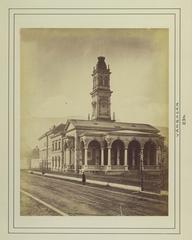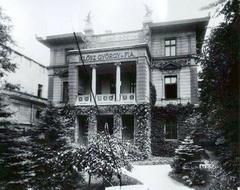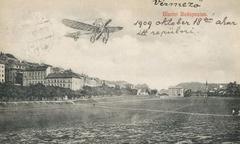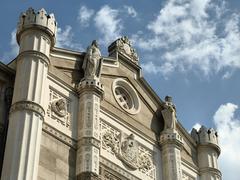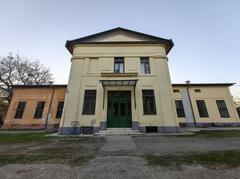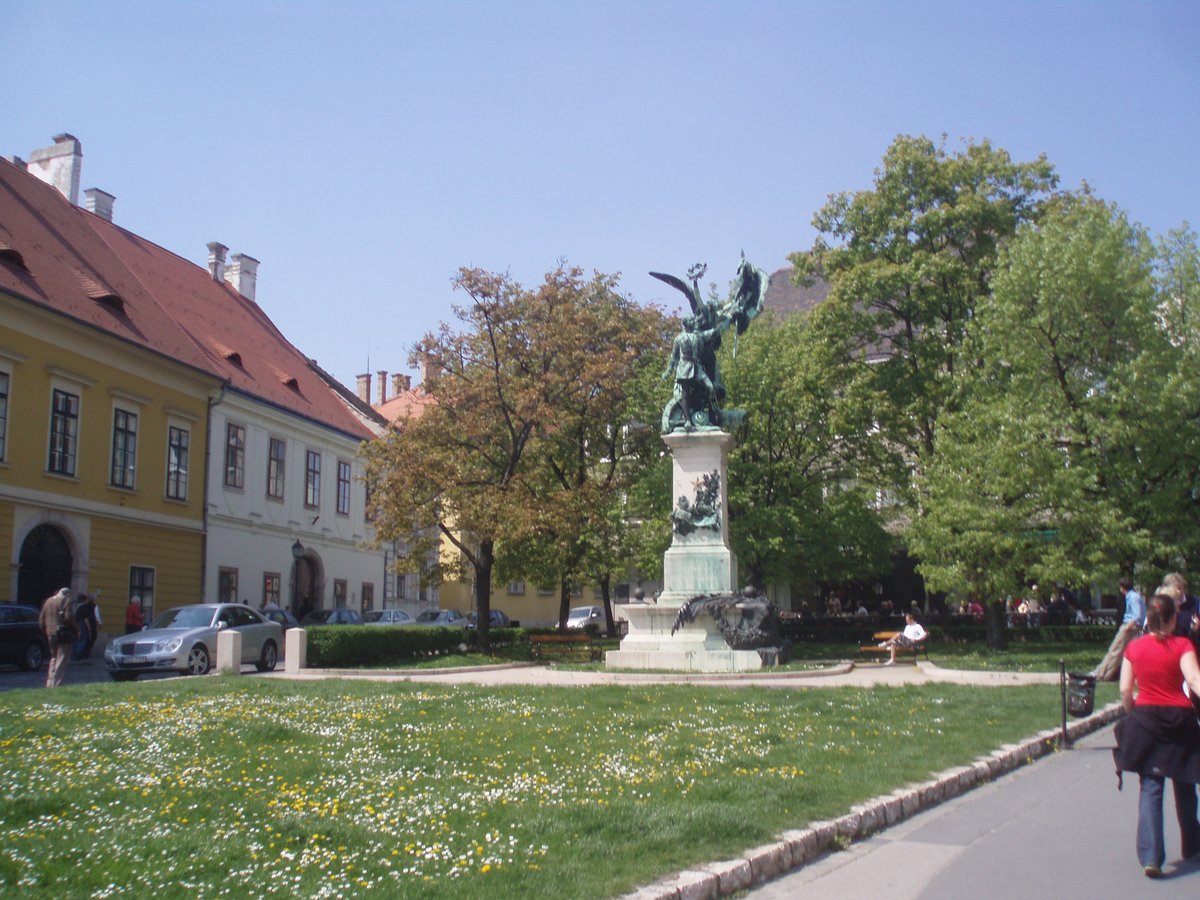
Comprehensive Guide to Visiting Buda Castle, Budapest, Hungary
Date: 19/07/2024
Introduction
Buda Castle, also known as Vár, is one of Budapest’s most iconic landmarks, epitomizing the rich tapestry of Hungarian history, architecture, and culture. Perched majestically on Castle Hill, this historic fortress and palace complex has endured centuries of transformation and tumult, from its origins in the 13th century under King Béla IV to its current status as a UNESCO World Heritage Site (UNESCO). The castle’s strategic location has made it a focal point in Hungary’s military history, serving as a royal residence, a military stronghold during the Ottoman occupation, and later, a Baroque palace under the Habsburgs. Its architecture is a testament to the diverse historical influences that have shaped it, featuring Gothic, Renaissance, Baroque, and Modernist elements (Hungarian National Museum). Today, Buda Castle is not only a symbol of Hungary’s resilience and cultural heritage but also a vibrant tourist attraction, housing several museums, including the Hungarian National Gallery and the Budapest History Museum (Budapest History Museum). This comprehensive guide aims to provide visitors with all the essential information needed to explore Buda Castle, including its historical significance, architectural highlights, visitor tips, and much more.
Table of Contents
- [Exploring Buda Castle - History, Visiting Hours, and Tickets](#exploring-buda-castle---history-visiting-hours-and-ticketsexploring-buda-castle---history-visiting-hours-and-tickets)
- [Introduction](#introductionintroduction-1)
- [Origins and Early History](#origins-and-early-historyorigins-and-early-history)
- [Medieval Expansion](#medieval-expansionmedieval-expansion)
- [Ottoman Occupation](#ottoman-occupationottoman-occupation)
- [Habsburg Era](#habsburg-erahabsburg-era)
- [19th Century Rebuilding](#19th-century-rebuilding19th-century-rebuilding)
- [World War II and Post-War Reconstruction](#world-war-ii-and-post-war-reconstructionworld-war-ii-and-post-war-reconstruction)
- [Modern Era and UNESCO World Heritage Site](#modern-era-and-unesco-world-heritage-sitemodern-era-and-unesco-world-heritage-site)
- [Visitor Information](#visitor-informationvisitor-information)
- [Nearby Attractions](#nearby-attractionsnearby-attractions)
- [Special Events and Photography Spots](#special-events-and-photography-spotsspecial-events-and-photography-spots)
- [Preservation Efforts](#preservation-effortspreservation-efforts)
- [Visitor Experience](#visitor-experiencevisitor-experience)
- [FAQ](#faqfaq)
- [Conclusion](#conclusionconclusion)
- [Buda Castle (Vár) - A Comprehensive Visitor’s Guide](#buda-castle-vár---a-comprehensive-visitors-guidebuda-castle-vár---a-comprehensive-visitors-guide)
- [Introduction](#introductionintroduction-2)
- [Historical Background](#historical-backgroundhistorical-background)
- [Architectural Significance](#architectural-significancearchitectural-significance)
- [Cultural Significance](#cultural-significancecultural-significance)
- [Visitor Information](#visitor-informationvisitor-information-1)
- [Getting There](#getting-theregetting-there)
- [Opening Hours](#opening-hoursopening-hours)
- [Ticket Prices](#ticket-pricesticket-prices)
- [Guided Tours](#guided-toursguided-tours)
- [Accessibility](#accessibilityaccessibility)
- [Events and Festivals](#events-and-festivalsevents-and-festivals)
- [Preservation and Restoration Efforts](#preservation-and-restoration-effortspreservation-and-restoration-efforts)
- [Modern-Day Significance](#modern-day-significancemodern-day-significance)
- [FAQ Section](#faq-sectionfaq-section)
- [Conclusion](#conclusionconclusion-1)
- [Explore Vár Budapest - Visiting Hours, Tickets, Key Attractions & Tips](#explore-vár-budapest---visiting-hours-tickets-key-attractions—tipsexplore-vár-budapest---visiting-hours-tickets-key-attractions—tips)
- [Introduction](#introductionintroduction-3)
- [Key Attractions](#key-attractionskey-attractions)
- [Buda Castle](#buda-castlebuda-castle)
- [Fisherman’s Bastion](#fishermans-bastionfishermans-bastion)
- [Matthias Church](#matthias-churchmatthias-church)
- [Hospital in the Rock Nuclear Bunker Museum](#hospital-in-the-rock-nuclear-bunker-museumhospital-in-the-rock-nuclear-bunker-museum)
- [Labyrinth of Buda Castle](#labyrinth-of-buda-castlelabyrinth-of-buda-castle)
- [Visitor Tips](#visitor-tipsvisitor-tips)
- [Best Time to Visit](#best-time-to-visitbest-time-to-visit)
- [Getting There](#getting-theregetting-there-1)
- [Guided Tours](#guided-toursguided-tours-1)
- [Accessibility](#accessibilityaccessibility-1)
- [Dining and Refreshments](#dining-and-refreshmentsdining-and-refreshments)
- [Safety and Security](#safety-and-securitysafety-and-security)
- [Photography](#photographyphotography)
- [Souvenirs](#souvenirssouvenirs)
- [FAQ](#faqfaq-1)
- [Conclusion](#conclusionconclusion-2)
Exploring Buda Castle - History, Visiting Hours, and Tickets
Introduction
Buda Castle, also known as Vár, is a historic fortress and palace complex that has stood the test of time, bearing witness to Hungary’s rich and tumultuous history. This guide offers a comprehensive look at Buda Castle’s past, visitor information, and tips for making the most of your visit to one of Budapest’s most iconic historical sites.
Origins and Early History
The history of Buda Castle dates back to the 13th century when it was initially constructed in 1265 under the reign of King Béla IV of Hungary. This Romanesque-style fortress was built to fortify the city against Mongol invasions, laying the foundation for future expansions and renovations (Hungarian National Museum).
Medieval Expansion
During the 14th and 15th centuries, Buda Castle underwent significant expansions under King Sigismund and King Matthias Corvinus. King Sigismund, who reigned from 1387 to 1437, transformed the castle into a Gothic palace, making it one of Europe’s largest and most impressive royal residences. King Matthias Corvinus, who ruled from 1458 to 1490, added Renaissance elements and established a library housing thousands of manuscripts (Budapest History Museum).
Ottoman Occupation
In 1541, the Ottoman Empire captured Buda, turning the castle into a military stronghold for nearly 150 years. Many Gothic and Renaissance structures were destroyed or altered, and new defensive walls, mosques, and baths were constructed (Hungarian National Museum).
Habsburg Era
The Habsburgs recaptured Buda in 1686, initiating extensive reconstruction projects. Under Maria Theresa’s reign in the 18th century, Buda Castle was transformed into a Baroque palace, with new wings, courtyards, and gardens symbolizing Habsburg power (Budapest History Museum).
19th Century Rebuilding
Following the Hungarian Revolution of 1848, Buda Castle was heavily damaged. Reconstruction efforts in the latter half of the 19th century, led by architect Miklós Ybl, incorporated Neo-Baroque elements. The castle was officially reopened in 1905, serving as a royal residence and a symbol of Hungarian national identity (Hungarian National Museum).
World War II and Post-War Reconstruction
Buda Castle suffered extensive damage during World War II, particularly during the Siege of Budapest in 1944-1945. Post-war reconstruction aimed to restore the castle while preserving its historical significance, completed in the 1960s and 1970s (Budapest History Museum).
Modern Era and UNESCO World Heritage Site
In 1987, Buda Castle was designated a UNESCO World Heritage Site, recognizing its historical and cultural significance. Today, the castle complex hosts several museums, including the Hungarian National Gallery and the Budapest History Museum, and remains a major tourist attraction (UNESCO).
Visitor Information
- Visiting Hours - Buda Castle is open daily from 10 AM to 6 PM, though hours may vary for different attractions within the complex. It is advisable to check the official website for the most up-to-date information.
- Ticket Prices - Tickets vary depending on the exhibitions and museums you wish to visit. General admission starts at approximately 2000 HUF for adults.
- Guided Tours - Guided tours are available and offer in-depth insights into the castle’s history and architecture.
- Accessibility - The castle is wheelchair accessible, with ramps and elevators available in most areas.
Nearby Attractions
- Chain Bridge - A historic suspension bridge that connects Buda and Pest across the Danube River.
- Fisherman’s Bastion - Offers panoramic views of Budapest and is a popular photographic spot.
- Matthias Church - A stunning Gothic church located just a short walk from the castle.
Special Events and Photography Spots
Throughout the year, Buda Castle hosts various cultural events, including concerts, art exhibitions, and festivals. The castle’s courtyards and gardens provide stunning views of Budapest, making them ideal spots for photography.
Preservation Efforts
Ongoing preservation efforts aim to maintain Buda Castle’s historical integrity while adapting it for contemporary use. Recent projects have focused on restoring original features, ensuring the castle remains a vibrant part of Hungary’s cultural landscape (Hungarian National Museum).
Visitor Experience
Visitors can explore various museums, historical sites, and architectural marvels within Buda Castle. Highlights include the Hungarian National Gallery, which houses an extensive collection of Hungarian art, and the Budapest History Museum, offering insights into the castle’s storied past. The courtyards and gardens provide stunning views of Budapest, making it a must-visit destination for tourists (Budapest History Museum).
FAQ
Q: What are the visiting hours for Buda Castle?
A: Buda Castle is open daily from 10 AM to 6 PM, though hours may vary for different attractions within the complex.
Q: How much are tickets to Buda Castle?
A: General admission starts at approximately 2000 HUF for adults, but prices can vary depending on the exhibitions and museums you wish to visit.
Q: Is Buda Castle wheelchair accessible?
A: Yes, the castle is wheelchair accessible, with ramps and elevators available in most areas.
Q: Are guided tours available?
A: Yes, guided tours are available and offer in-depth insights into the castle’s history and architecture.
Conclusion
In summary, Buda Castle is a rich tapestry of architectural evolution, cultural significance, and historical events. From its origins in the 13th century to its modern-day status as a UNESCO World Heritage Site, Buda Castle remains a symbol of Hungary’s enduring heritage and national identity. Whether you’re exploring its museums, enjoying the panoramic views, or attending a cultural event, Buda Castle offers a memorable experience for all visitors.
Buda Castle (Vár) - A Comprehensive Visitor’s Guide
Introduction
Buda Castle, also known as Vár, is one of Budapest’s most iconic landmarks. This grand historical castle and palace complex has stood the test of time, encapsulating Hungary’s rich history, architectural marvels, and vibrant culture.
Historical Background
The Vár, or Buda Castle, is a historical castle and palace complex of the Hungarian kings in Budapest. Its construction began in 1247 under King Béla IV, following the Mongol invasion. The castle has undergone numerous reconstructions and expansions, reflecting various architectural styles, including Gothic, Renaissance, Baroque, and Modernist influences. The castle’s strategic location on Castle Hill provided a defensive advantage, making it a focal point in Hungary’s military history.
During the Ottoman occupation (1541-1686), the castle served as a military stronghold. The Habsburgs later transformed it into a Baroque palace, which was heavily damaged during World War II. Post-war reconstruction efforts aimed to restore its historical grandeur, and today, Buda Castle is a UNESCO World Heritage Site (UNESCO).
Architectural Significance
Buda Castle’s architecture is a testament to Hungary’s rich and diverse history. The castle complex includes several notable structures:
-
Royal Palace - The centerpiece of Buda Castle, the Royal Palace, showcases Baroque architecture with its grand facades and ornate interiors. The palace houses the Hungarian National Gallery and the Budapest History Museum (Hungarian National Gallery).
-
Matthias Church - Located within the castle district, Matthias Church is a stunning example of Gothic architecture. It has been the site of numerous coronations and royal weddings (Matthias Church).
-
Fisherman’s Bastion - This neo-Gothic and neo-Romanesque terrace offers panoramic views of Budapest. It was built in the late 19th century to celebrate the 1000th anniversary of the Hungarian state (Fisherman’s Bastion).
Cultural Significance
Buda Castle is not just an architectural marvel but also a cultural hub. It hosts various cultural events, exhibitions, and festivals throughout the year. The castle district is home to several museums, including:
-
Hungarian National Gallery - This museum showcases Hungarian art from the Middle Ages to the present day. It features works by renowned Hungarian artists such as Mihály Munkácsy and László Paál (Hungarian National Gallery).
-
Budapest History Museum - Located in the southern wing of the Royal Palace, this museum chronicles the history of Budapest from its prehistoric origins to modern times (Budapest History Museum).
-
Museum of Music History - This museum offers insights into Hungary’s rich musical heritage, featuring exhibits on famous Hungarian composers like Franz Liszt and Béla Bartók (Museum of Music History).
Visitor Information
Visiting Buda Castle can be a memorable experience with proper planning. Here are some tips for tourists:
Getting There
Buda Castle is accessible by public transport, including buses and the Castle Hill Funicular. The funicular offers a scenic ride from the base of Castle Hill to the castle district (Budapest Funicular).
Opening Hours
The castle district is open to visitors year-round, but individual attractions within the complex may have specific opening hours. It’s advisable to check the official websites for up-to-date information (Buda Castle).
Ticket Prices
Admission fees vary depending on the attractions you wish to visit. It is recommended to purchase tickets in advance, especially during peak tourist seasons. For current prices, visit the official websites of the individual attractions.
Guided Tours
To fully appreciate the historical and cultural significance of Buda Castle, consider joining a guided tour. Several tour operators offer comprehensive tours that cover the main attractions and provide in-depth historical context (Buda Castle Tours).
Accessibility
Buda Castle is accessible to visitors with mobility challenges, though some areas may be less accessible due to the historic nature of the site. It’s best to check in advance and plan your visit accordingly.
Events and Festivals
Buda Castle hosts various events and festivals, including the Budapest Wine Festival and the Festival of Folk Arts. These events offer a unique opportunity to experience Hungarian culture and traditions (Budapest Wine Festival).
Preservation and Restoration Efforts
Preserving Buda Castle’s historical and architectural integrity is an ongoing effort. The Hungarian government, along with international organizations, has invested in extensive restoration projects to maintain the castle’s grandeur. Recent projects include the restoration of the Royal Palace’s facades and the reconstruction of the medieval fortifications (Buda Castle Restoration).
Modern-Day Significance
Today, Buda Castle is a symbol of Hungary’s resilience and cultural heritage. It attracts millions of visitors annually, contributing significantly to Budapest’s tourism industry. The castle district’s blend of historical landmarks, cultural institutions, and scenic views makes it a must-visit destination for anyone exploring Budapest.
FAQ Section
Q: What are the visiting hours for Buda Castle?
A: The castle district is open year-round, but individual attractions may have specific hours. Check the official websites for the most accurate information.
Q: How much do tickets cost for Buda Castle?
A: Ticket prices vary depending on the attractions. Visit the official websites for current prices and consider purchasing tickets in advance.
Q: Are there guided tours available at Buda Castle?
A: Yes, several tour operators offer guided tours that provide historical context and cover the main attractions.
Conclusion
In conclusion, the significance of Vár, or Buda Castle, lies in its rich historical legacy, architectural splendor, and cultural vibrancy. It stands as a testament to Hungary’s storied past and its enduring cultural heritage, offering visitors a unique glimpse into the nation’s history and traditions. Whether you’re exploring the Royal Palace, attending a festival, or simply enjoying the panoramic views, Buda Castle promises an unforgettable experience.
For more information and updates, follow us on social media or download our mobile app.
Explore Vár Budapest - Visiting Hours, Tickets, Key Attractions & Tips
Introduction
Discover the rich history and stunning architecture of Vár, Budapest’s historic castle district. This guide covers everything you need to know for a memorable visit, including key attractions, visiting hours, ticket information, and insider tips.
Key Attractions
Buda Castle
Buda Castle, a UNESCO World Heritage Site, is the crown jewel of Vár. This historic castle complex dates back to the 13th century and has been the residence of Hungarian kings. The castle houses the Hungarian National Gallery, the Budapest History Museum, and the National Széchényi Library. Visitors can explore the art collections, historical exhibits, and the stunning architecture of the castle. The castle grounds offer panoramic views of the Danube River and Pest side of the city (Hungarian National Gallery).
- Visiting Hours - Tuesday to Sunday, 10 AM - 6 PM
- Ticket Prices - Adults - 2000 HUF, Students and Seniors - 1000 HUF
Fisherman’s Bastion
The Fisherman’s Bastion is a neo-Gothic and neo-Romanesque terrace that offers some of the best views of Budapest. Built between 1895 and 1902, it features seven towers representing the seven Magyar tribes that settled in the Carpathian Basin in 895. The bastion is named after the fishermen who defended this part of the city walls during the Middle Ages. The structure is adorned with intricate carvings and provides a picturesque backdrop for photographs (Fisherman’s Bastion).
- Visiting Hours - Open 24 hours
- Ticket Prices - Free to enter; upper terraces -1000 HUF
Matthias Church
Matthias Church, officially named the Church of Our Lady, is a stunning Gothic-style church located next to the Fisherman’s Bastion. It was originally built in the 13th century and has been the site of several coronations, including that of Franz Joseph I and Charles IV. The church’s interior is richly decorated with frescoes and stained glass windows. Visitors can also explore the church’s museum, which houses a collection of ecclesiastical art and relics (Matthias Church).
- Visiting Hours - Monday to Friday, 9 AM - 5 PM; Saturday, 9 AM - 1 PM; Sunday, 1 PM - 5 PM
- Ticket Prices - Adults - 1500 HUF, Students and Seniors - 1000 HUF
Hospital in the Rock Nuclear Bunker Museum
This unique museum is located in a former secret emergency hospital and nuclear bunker beneath the Buda Castle Hill. The hospital was used during World War II and the 1956 Hungarian Revolution. The museum offers guided tours that take visitors through the hospital’s operating rooms, wards, and the nuclear bunker, providing a fascinating glimpse into Hungary’s wartime history (Hospital in the Rock).
- Visiting Hours - Daily, 10 AM - 8 PM
- Ticket Prices - Adults - 4000 HUF, Students and Seniors - 2000 HUF
Labyrinth of Buda Castle
The Labyrinth of Buda Castle is a network of underground caves and tunnels that have been used for various purposes throughout history, including as a wine cellar, prison, and military bunker. Today, visitors can explore the labyrinth’s dark passages and learn about its history through exhibits and guided tours. The labyrinth is also known for its eerie atmosphere and occasional art installations (Labyrinth of Buda Castle).
- Visiting Hours - Daily, 10 AM - 7 PM
- Ticket Prices - Adults - 3000 HUF, Students and Seniors - 2000 HUF
Visitor Tips
Best Time to Visit
The best time to visit Vár is during the spring (April to June) and autumn (September to October) when the weather is mild and the tourist crowds are smaller. Summer (July to August) is the peak tourist season, and while the weather is warm, it can be crowded. Winter (November to March) offers a quieter experience, but some attractions may have reduced hours or be closed.
Getting There
Vár is easily accessible by public transportation. The Buda Castle Funicular, which operates from Clark Ádám Square, offers a scenic ride up to the castle. Alternatively, visitors can take buses 16, 16A, or 116, which stop at various points around the castle district. Walking is also an option, with several pedestrian paths leading up to the castle from the city center.
Guided Tours
To fully appreciate the history and significance of Vár, consider joining a guided tour. Many tour operators offer walking tours that cover the main attractions, including Buda Castle, Fisherman’s Bastion, and Matthias Church. Some tours also include access to areas that are not open to the general public, such as the castle’s medieval cellars.
Accessibility
While Vár is located on a hill, many of its attractions are accessible to visitors with mobility issues. The Buda Castle Funicular and some buses are wheelchair accessible. Additionally, several attractions, including the Hungarian National Gallery and the Budapest History Museum, have ramps and elevators. It’s advisable to check the accessibility information for each attraction before visiting.
Dining and Refreshments
Vár offers a variety of dining options, ranging from casual cafes to fine dining restaurants. For a traditional Hungarian meal, try one of the restaurants located within the castle district, which often feature dishes such as goulash, paprikash, and strudel. There are also several cafes and bakeries where visitors can enjoy coffee and pastries while taking in the views.
Safety and Security
Vár is generally a safe area for tourists, but it’s always wise to take standard precautions. Keep an eye on your belongings, especially in crowded areas, and be aware of your surroundings. The castle district is well-patrolled by police, and there are information points where visitors can seek assistance if needed.
Photography
Vár is a photographer’s paradise, with its historic architecture and stunning views. Most attractions allow photography, but some may have restrictions on the use of flash or tripods. It’s always a good idea to check the photography policy at each site. Early morning or late afternoon light provides the best conditions for capturing the beauty of Vár.
Souvenirs
There are several shops within the castle district where visitors can purchase souvenirs, including traditional Hungarian crafts, jewelry, and artwork. The Hungarian National Gallery and the Budapest History Museum also have gift shops that offer a selection of books, prints, and other items related to the exhibits.
FAQ
Q: What are the visiting hours for Vár Budapest?
A: Most attractions are open from 10 AM to 6 PM, but hours can vary. Check the specific attraction for exact times.
Q: How much are tickets for Buda Castle?
A: Adult tickets are 2000 HUF, while students and seniors pay 1000 HUF.
Q: Are there guided tours available?
A: Yes, many tour operators offer guided tours of the main attractions and some exclusive areas not open to the general public.
Q: Is Vár accessible to visitors with mobility issues?
A: Many attractions are accessible, with ramps and elevators available. The Buda Castle Funicular and some buses are also wheelchair accessible.
Conclusion
By following these tips and exploring the key attractions, visitors to Vár can enjoy a memorable and enriching experience in one of Budapest’s most historic and picturesque districts. For more travel tips and updates, download the mobile app Audiala, check out other related posts, or follow us on social media.
Conclusion
In conclusion, Buda Castle, or Vár, stands as a monumental testament to Hungary’s rich and diverse history. From its construction in the 13th century to its designation as a UNESCO World Heritage Site in 1987, the castle has witnessed and withstood numerous historical events and architectural changes. Visitors today can explore a variety of attractions within the castle complex, including the Hungarian National Gallery, the Budapest History Museum, and the stunning Matthias Church (Matthias Church). The castle district also offers panoramic views of Budapest, making it a must-visit destination for photographers and history enthusiasts alike. With ongoing preservation and restoration efforts, Buda Castle continues to be a vibrant part of Hungary’s cultural landscape, hosting various cultural events, exhibitions, and festivals throughout the year (Budapest History Museum). Whether you’re exploring the labyrinthine tunnels beneath the castle, attending a festival, or simply enjoying the breathtaking views, Buda Castle promises an unforgettable experience. For more information and updates, consider downloading the Audiala mobile app or following related posts on social media.
